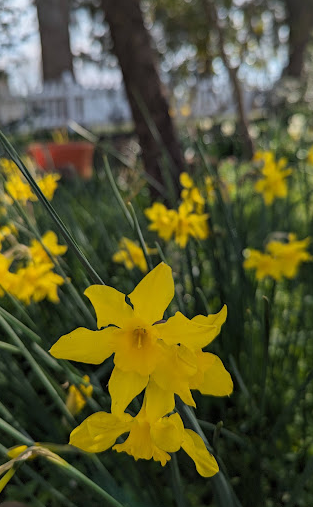Yellow Magnolias
- Clifford Brock
- Apr 13, 2022
- 3 min read
Most gardening "types" are familiar with our evergreen Southern magnolia (Magnolia grandiflora) and perhaps the deciduous Asian magnolias, or "tulip trees", that often get ruined by our late freezes, like the saucer magnolia (Magnolia × soulangeana) and star magnolia (Magnolia stellata). But few people seem aware of the deciduous yellow magnolias, and I hardly ever encounter them outside of special collections and public botanical gardens. My goal in writing this is to raise awareness, especially here in the south, that you too can enjoy these beauties... even if they are a bit hard to find.
When we think of the south we think of images like Greek revival architecture and forests engulfed in kudzu, but did you know that we are one the only places on Earth where one can find a wild, or native yellow magnolia. Our Magnolia acuminata var. subcordata (or yellow cucumber tree) is prized in Europe and New Zealand for its unusual color, but it is almost never encountered here. As is often the case, our American natives are usually appreciated more so outside our country than here, and vice versa.

Magnolia a. var. subcordata is the southern variant of our native cucumber tree. "Cucumber" refers to the unripened fruit, which looks a bit like a skinny cucumber. This is a stately tree of rich cove forests that has big ovate leaves. Our southern variety is confined to the piedmont and coastal plain of Georgia and South Carolina.

Back in the 1950s, the Brooklyn Botanic Garden began making crosses using our native cucumber tree and various Asian species. The resulting hybrids are often labeled "× brooklynensis" and come in a wide array of colors and forms. I'm by no means an expert on these plants and will only mention the hybrids I've personally grown or observed. There are numerous cultivars of "yellow" magnolias that I've never seen.
Probably the most popular hybrid is Magnolia 'Butterflies'. Its intense yellow buds open and quickly fade to light cream. This small tree often flowers just before the leaves emerge casting a creamy yellow haze on the landscape! There is a largish specimen, approximately 15 years old, on the flower perennial hill at the State Botanical Garden of Georgia. When in peak bloom it is a glorious sight; however, it blooms early and in tandem with other Asian magnolias. And because of this early flowering, often in mid to late March, it is extremely susceptible to damage from late freezes. In some years the flowers are completely obliterated just before they completely unfurl. While I can't say with certainty, I expect this tree to top out around 25 ft.

A safer bet for our erratic climate is Magnolia 'Yellow Bird'. This cultivar shares more in common with our native cucumber tree, including a later flowering time which usually avoids freeze damage. While it doesn't produce quite the density of blooms when compared to "Butterflies", it does exhibit a more intense yellow color. It has a vigorous growth habit and will ultimately become a medium-sized specimen (around 40ft tall).
Yellow magnolias, like almost all deciduous magnolias grow best in full sun to light shade. They like average water; however, they can be quite sensitive to drought the first year or two. Otherwise, these are easy plants to grow and should provide decades of enjoyment. They only get better with time!
Unfortunately, they are hard to find. Here are some of my favorite online sources: Gossler Farms, Bleuwood Nursery, Nurseries Caroliniana, Woodlanders, and Camellia Forest Nursery. Expect to pay anywhere from $50-$100 for a 1 to 2 gal. But you'll have something truly different and special!




Comments